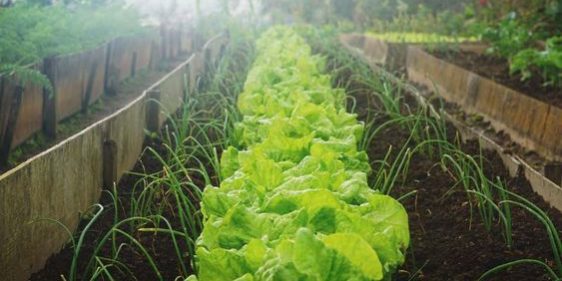Are your planted veggies constantly under attack from marauding critters? If so, it’s time to strengthen your defensive lines. An easily accessible landscape is not going to protect your veggie garden, so that is the first area you should focus on. Preventing animals from identifying a food source will make the rest of your efforts more effective.
Species Identification
Before you can combat hungry critters, you need to know which species are invading your garden. Depending on where you live veggie eating animals may include cats and dogs, birds and possums, or rabbits and foxes. Some animals can be stopped by large, strong barriers surrounding a property. However, other critters use alternative means of travel and can circumvent these barriers quite easily.
Look for signs such as paw tracks to identify ground dwelling animals of various sizes. If you suspect that burrowing animals are an issue, carefully inspect your property for mounds of displaced dirt. You cannot come up with an effective pest control strategy if you do not know your enemy.
Build Fences
Some animals are deterred when faced with a barrier such as fencing. If you don’t already have a veggie patch, putting up fencing before you begin planting is recommended. Your fence should be high enough to prevent access to any ground dwelling critters, so 1 – 1½ metres tall is ideal. However, it is important to remember that some animals have incredibly strong teeth so choose your fencing materials with local wildlife in mind. Chicken wire can help to reinforce a wooden fence and is relatively inexpensive. If there is a large population of wild rabbits where you live, a shallow fence will not provide adequate protection. Burying the fence at least 30cm deep will act as a more effective defence.
Protect the Babies
The new additions to your veggie garden are most vulnerable to attack. The nutrients and chemicals that these fertiliser fed plants produce will attract animals to your garden. An established plant may be able to weather the damage caused by grazing; however, nursery plants are not yet strong enough. You can use tree protector sleeves to ring-fence new plants and shrubs, as well as netting to ward off attacks from small animals that are not deterred by simple barriers.
Planting High
Animals will always go for the easiest meal. Are rabbits stealing nibbles of your prized veggies? It’s time to consider elevation. Raised veggie beds make it difficult for some animals to reach plants and shrubs. A half meter raised bed that is protected by a fence will significantly reduce the opportunity for animals to access food. Alternatively, you can use window boxes and other types of hanging containers to keep veggies out of reach.
Growing Distractions
This may sound contrary to your objectives but sometimes it makes sense not to protect food sources. Animals are going to forage for food no matter how well you protect your veggie garden. However, as already mentioned, most critters will also settle for the easiest meal. If you have wild or even planted sources of food on the edge of your property, it can help keep animals away from the plants and shrubs you care about most. Essentially, by not keeping the edges of your property overly tidy, you are providing an alternative food source that eliminates the need for animals to investigate any further.
Are you considering exterior renovations that incorporate a dedicated area for a veggie garden? Speak to a member of the Houspect team today if you need assistance with building renovation inspections.







